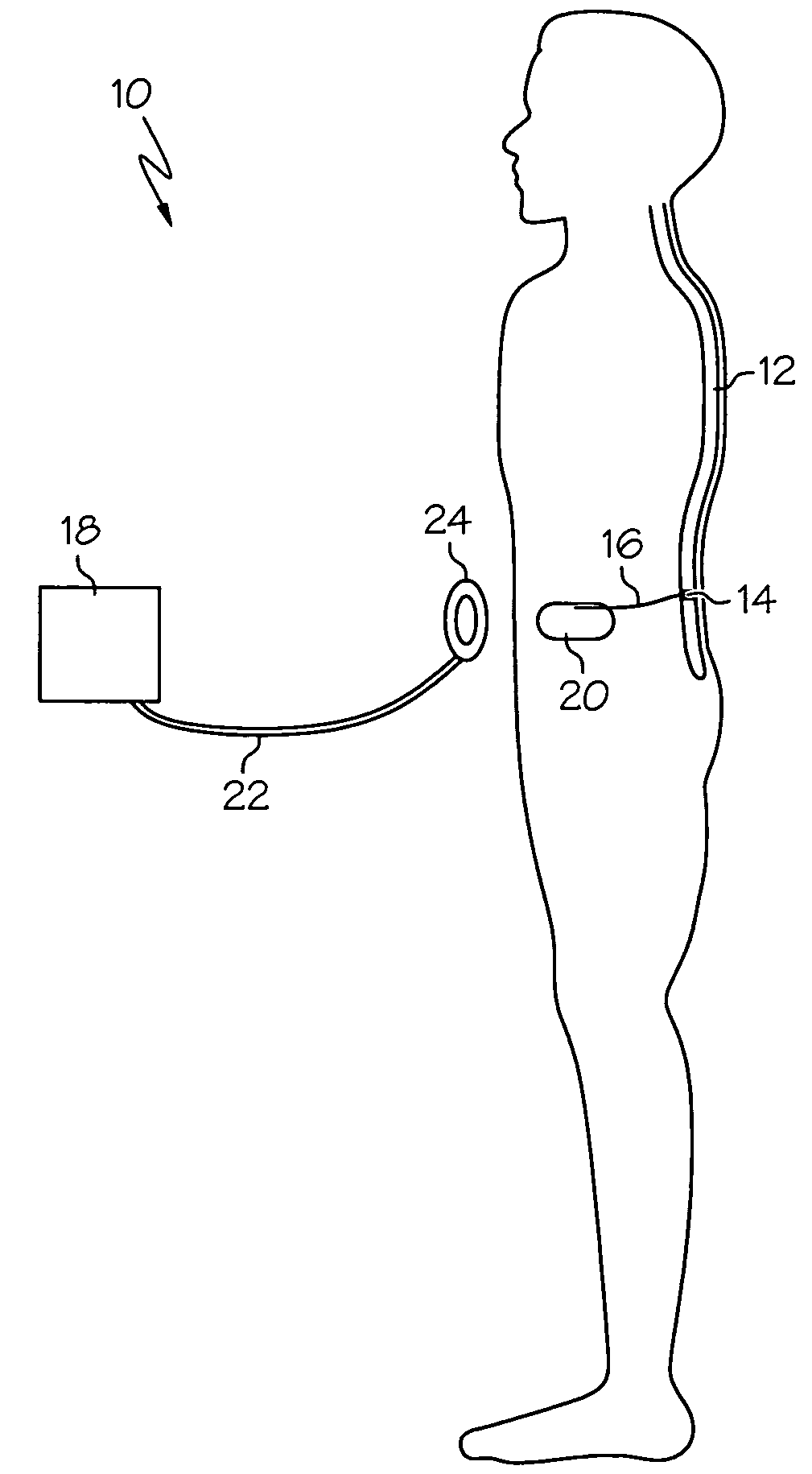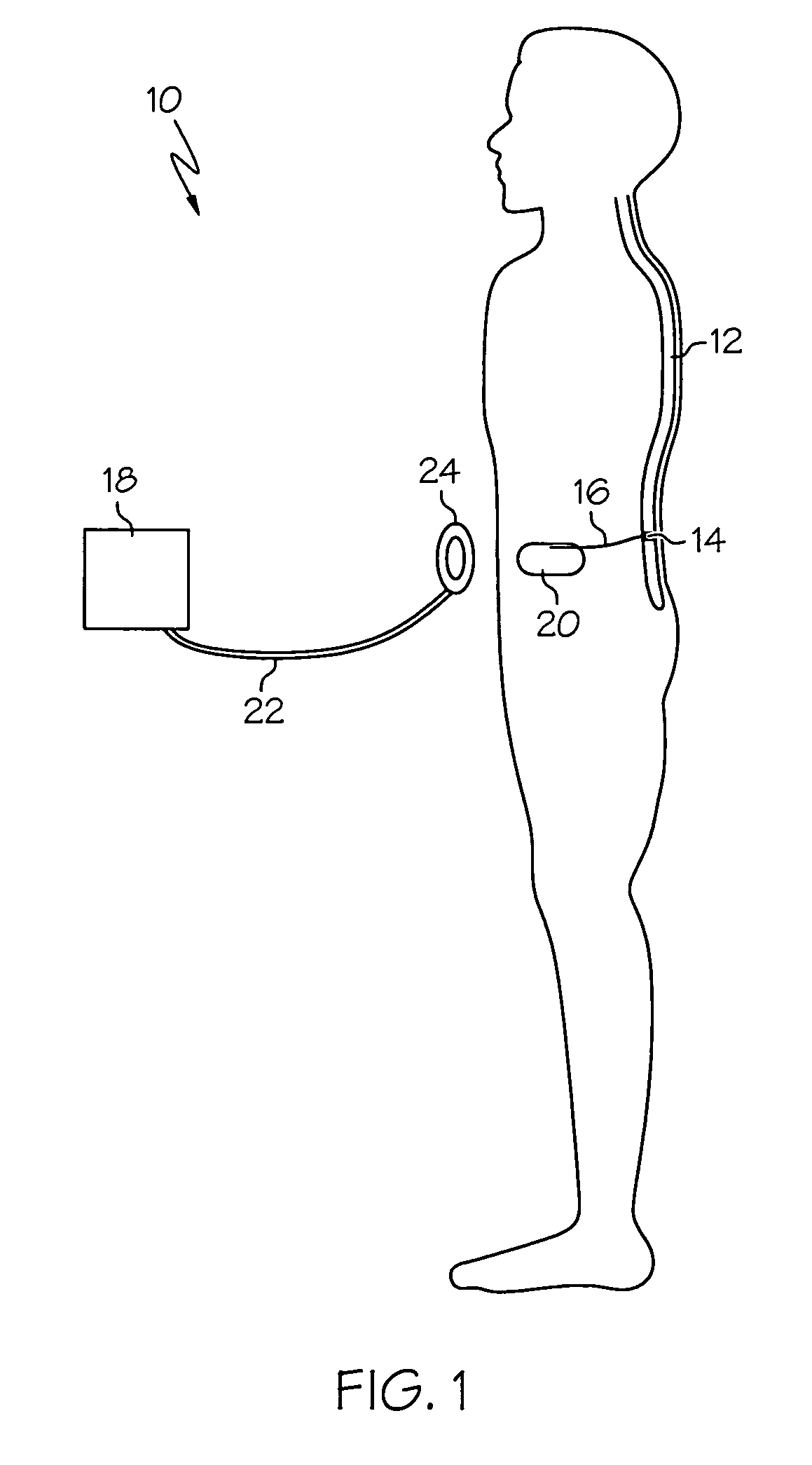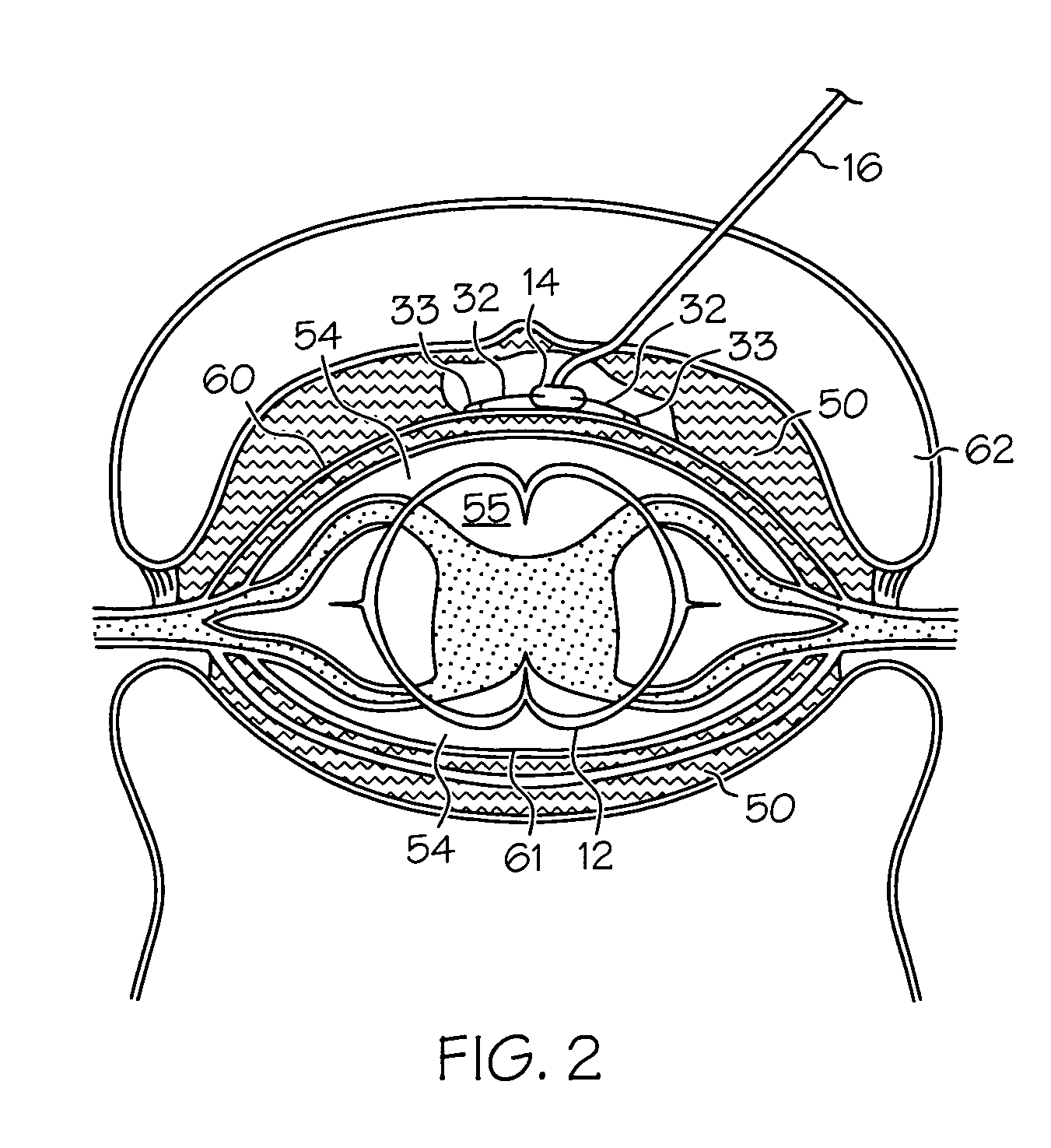Electrical tissue stimulation apparatus and method
a technology of electric tissue and electrodes, applied in the field of implantable leads, can solve the problems of affecting the effect of the patient's treatment, the electrodes are not very useful in delivering therapeutic current, and the half-section of each electrode is facing away from the tissue of interest, so as to achieve the effect of convenient removal
- Summary
- Abstract
- Description
- Claims
- Application Information
AI Technical Summary
Benefits of technology
Problems solved by technology
Method used
Image
Examples
Embodiment Construction
[0047]FIG. 1 is a schematic view of patient 10 having an implant of a neurological stimulation system employing an embodiment of the invention. The preferred system uses a programmer 18 that is coupled via conductor 22 to radio-frequency antenna 24. This permits attending medical personnel to change various stimulation parameters after implant using the radio-frequency communication.
[0048]This communication is directed to an implantable pulse generator 20. The stimulation pulses are produced by implantable pulse generator 20, which is preferably an Itrel II® or Synergy® implantable neurological pulse generator available from Medtronic, Inc.
[0049]The stimulation pulses produced by implantable pulse generator 20 are coupled to spinal cord 12 using insulated lead 16, sometimes using also a connecting segment called an extension (not shown). The electrodes of insulated lead 16 are located at its distal end 14 located near the spinal cord 12.
[0050]Though the preferred mode employs fully ...
PUM
 Login to View More
Login to View More Abstract
Description
Claims
Application Information
 Login to View More
Login to View More - R&D
- Intellectual Property
- Life Sciences
- Materials
- Tech Scout
- Unparalleled Data Quality
- Higher Quality Content
- 60% Fewer Hallucinations
Browse by: Latest US Patents, China's latest patents, Technical Efficacy Thesaurus, Application Domain, Technology Topic, Popular Technical Reports.
© 2025 PatSnap. All rights reserved.Legal|Privacy policy|Modern Slavery Act Transparency Statement|Sitemap|About US| Contact US: help@patsnap.com



